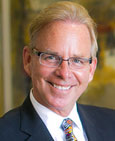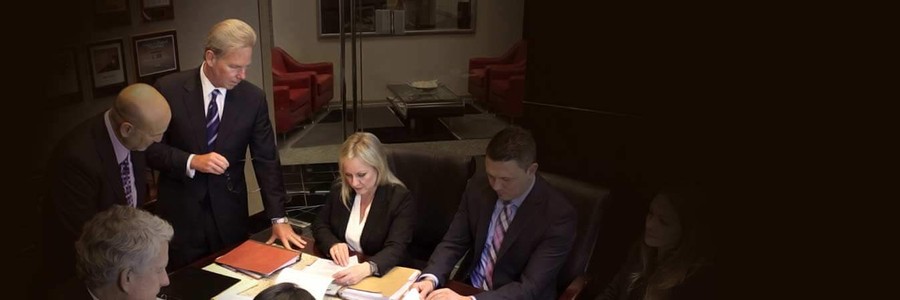T-Bone Car Accident Attorney

If you've been injured in a T-bone car accident please contact our experienced California car accident lawyers for a free consultation. Call (800)-561-4887 to speak confidentially to our passionate and trusted legal team. We've recovered over $500 Million for our clients.
A T-bone car accident, also known as a side-impact collision or a broadside crash, occurs when the front of one vehicle crashes into the side of another. These types of accidents often occur at street intersections when one driver runs a red light or stop sign or fails to yield to an oncoming vehicle or a car that has the right of way at the intersection.
T-bone collisions have the potential to result in severe or even catastrophic injuries both to drivers and passengers involved in the crash. According to the U.S. National Highway Traffic Safety Administration (NHTSA), T-bone car accidents account for a little over 25 percent of all fatal car accidents in the United States. If you or a loved one has been injured in a T-bone crash, it is important that you better understand your legal rights and options.
Brian Chase, Senior Partner: “I went to law school knowing I wanted to be a personal injury attorney. I wanted my life’s work to have a positive impact on other people’s lives.”
Proving Liability in a T-bone Car Accident?
Proving liability or responsibility for a T-bone car accident is the basis of a successful personal injury claim. In order to prove fault and liability, plaintiffs must be able to prove that the other driver was negligent. Looking into what caused the collision is the first step in the direction. Here are some of the most common causes of side-impact collisions:
- Failing to yield the right of way. When a vehicle fails to yield the right of way at an intersection, a T-bone collision could occur. Failing to yield the right of way includes running a red light, not properly stopping at a stop sign and making an unsafe turn in front of an oncoming vehicle. A number of broadside crashes involve motorcyclists because motorists fail to spot and yield the right of way to oncoming motorcycles at street intersections.
- Turning across traffic lanes. When a motorist is in a turning lane and can legally make a turn across traffic, he or she must wait until it is safe to do so. Often, drivers fail to see oncoming vehicles until it is too late.
- Aggressive driving. Aggressive drivers also tend to be reckless. They use their vehicles to intimidate others on the roadway.
- Distracted driving. Talking on a cell phone, even if it's hands-free, can have devastating consequences as can texting while driving. Such behavior can take the driver's eyes, concentration and focus away from driving. Distracted driving often results in broadside crashes.
- Driving under the influence. Alcohol and/or drugs impair a driver's reflexes, judgment and sight.
- Dangerous intersections. Street intersections that have poor visibility often cause or contribute to broadside crashes.
Injuries in T-Bone Car Accidents
The most common types of injuries in broadside crashes or T-bone car accidents are chest injuries and injuries to the lower extremities, head, abdomen and pelvis. The nature and extent of the injuries could depend on several factors. The position of the vehicle and where the vehicle's occupants are sitting can play a part in the severity of the injuries sustained in a broadside crash. If a victim was sitting on the side of the vehicle that was struck, they could be severely injured when the door panel hits them. If they are sitting on the side that is not struck, they may suffer head injuries or other blunt trauma injuries.
The victim's age could also be a factor. Children, for example, are likely to suffer more severe injuries in broadside crashes compared to older adults. In fact, children could be severely injured even when the T-bone crash is low-speed or low-impact. Children between the ages of 5 and 9 represent about 19 percent of those injured in car accidents and those between 10 and 15 represent about 27 percent of car accident injury victims. Yet another factor is the use of seatbelts or child safety seats. Failure to buckle up or use appropriate safety seats for children could result in catastrophic injuries or even fatalities in a T-bone car accident.
Liability and Compensation
In a majority of the car accident cases, plaintiffs must prove negligence on the part of the other motorist in order to seek and obtain maximum compensation for their losses. Injured victims can seek compensation for damages such as medical expenses, lost wages, hospitalization, rehabilitation costs, permanent injuries such as scarring or disfigurement, pain and suffering and emotional distress.
In cases where a T-bone car accident results in death, the family members of the deceased victims can file what is known as a wrongful death claim, which compensates them for damages including medical and funeral costs, lost future income, pain and suffering and loss of love and companionship.
Obtaining just compensation for your losses can be a struggle, especially in cases where you must prove negligence or wrongdoing. The experienced California T-bone car accident lawyers at Bisnar Chase have more than three decades of experience representing the rights of seriously injured car accident victims and their families.
We have the will, resources and reputation of fighting insurance companies on behalf of our injured clients. We have recovered millions in compensation for victims and their families from negligent drivers, manufacturers of defective autos and governmental agencies that have failed to maintain and design safe streets and intersections.
Call us at (800) 561-4887 to schedule a free consultation and comprehensive case evaluation.
Other Service Locations for Car Accidents
